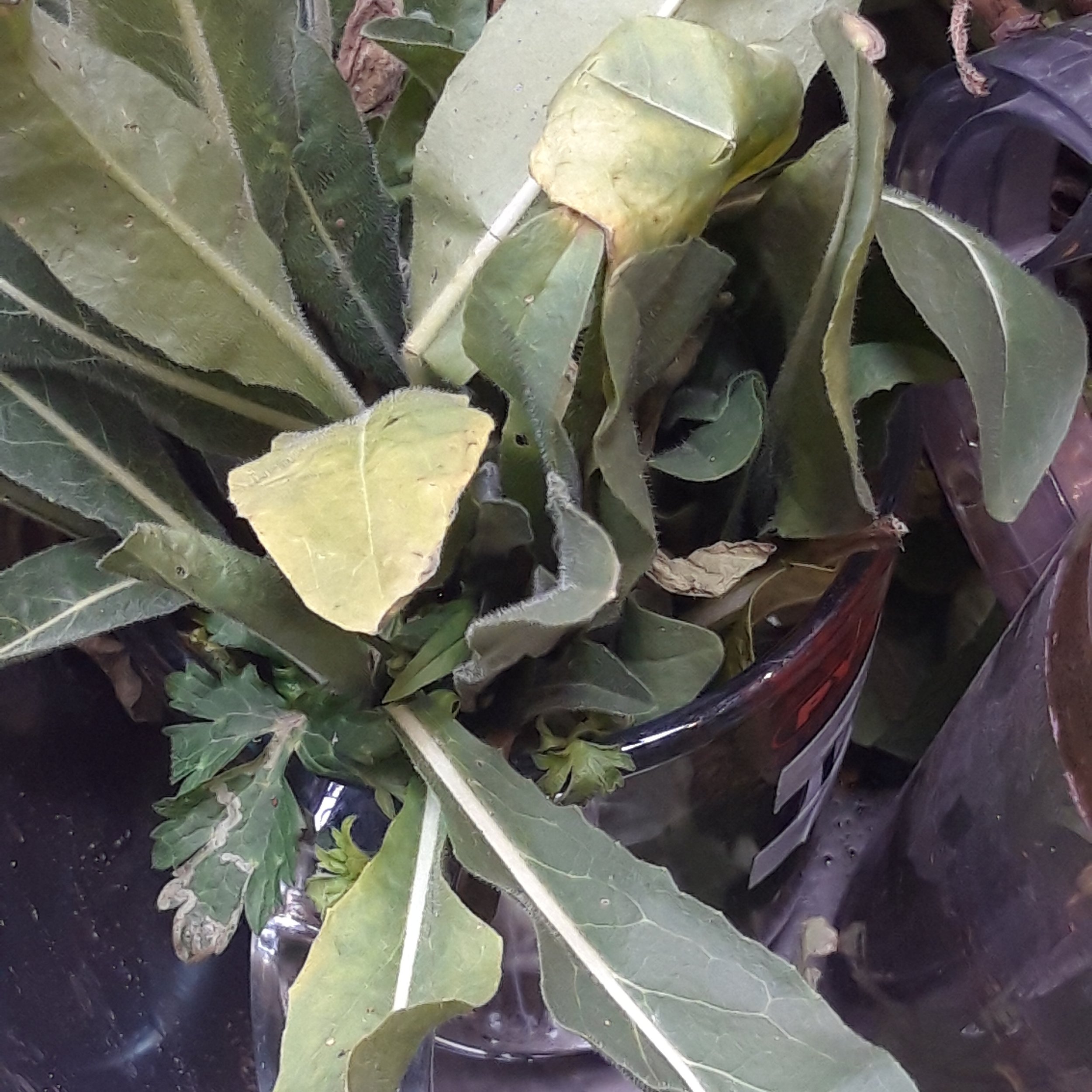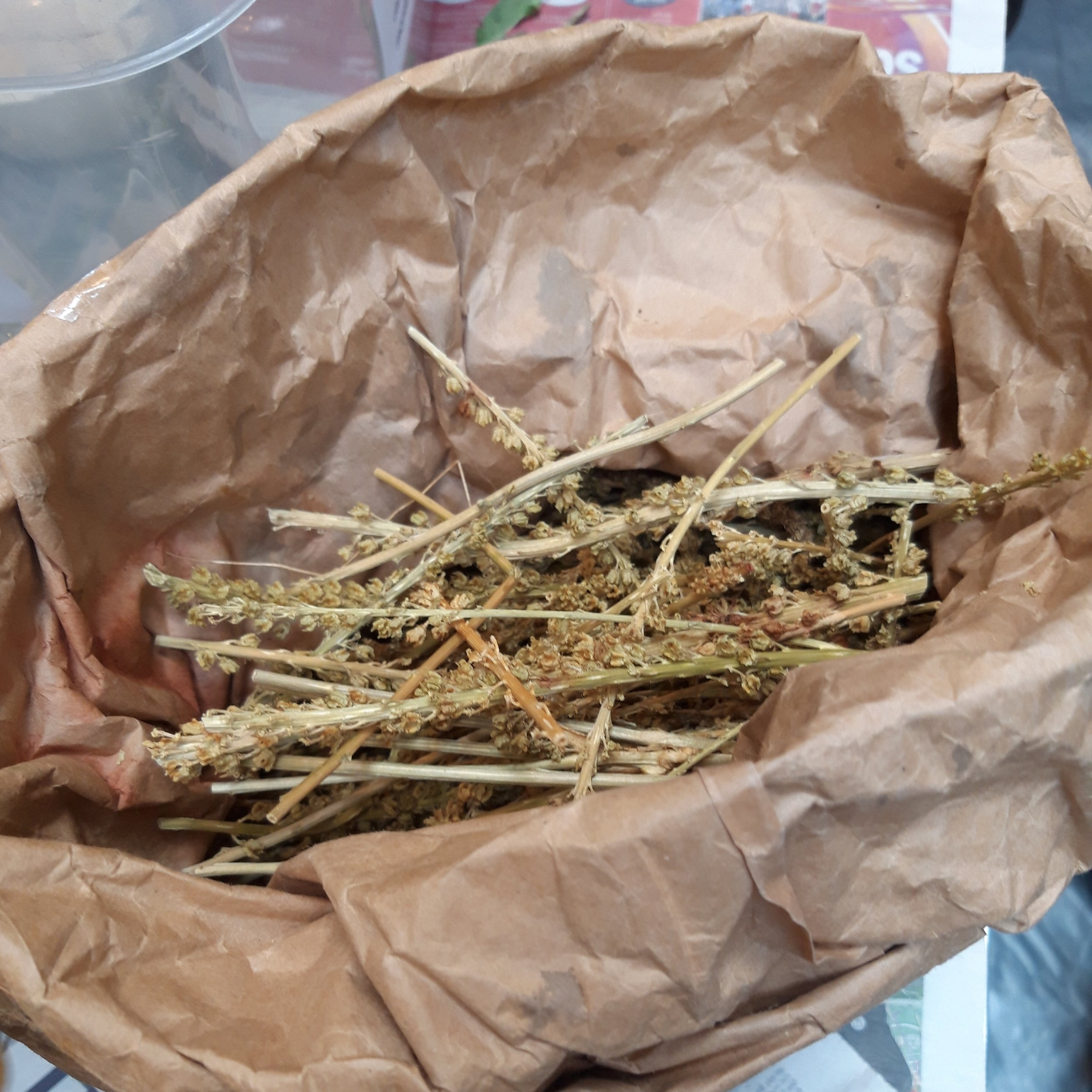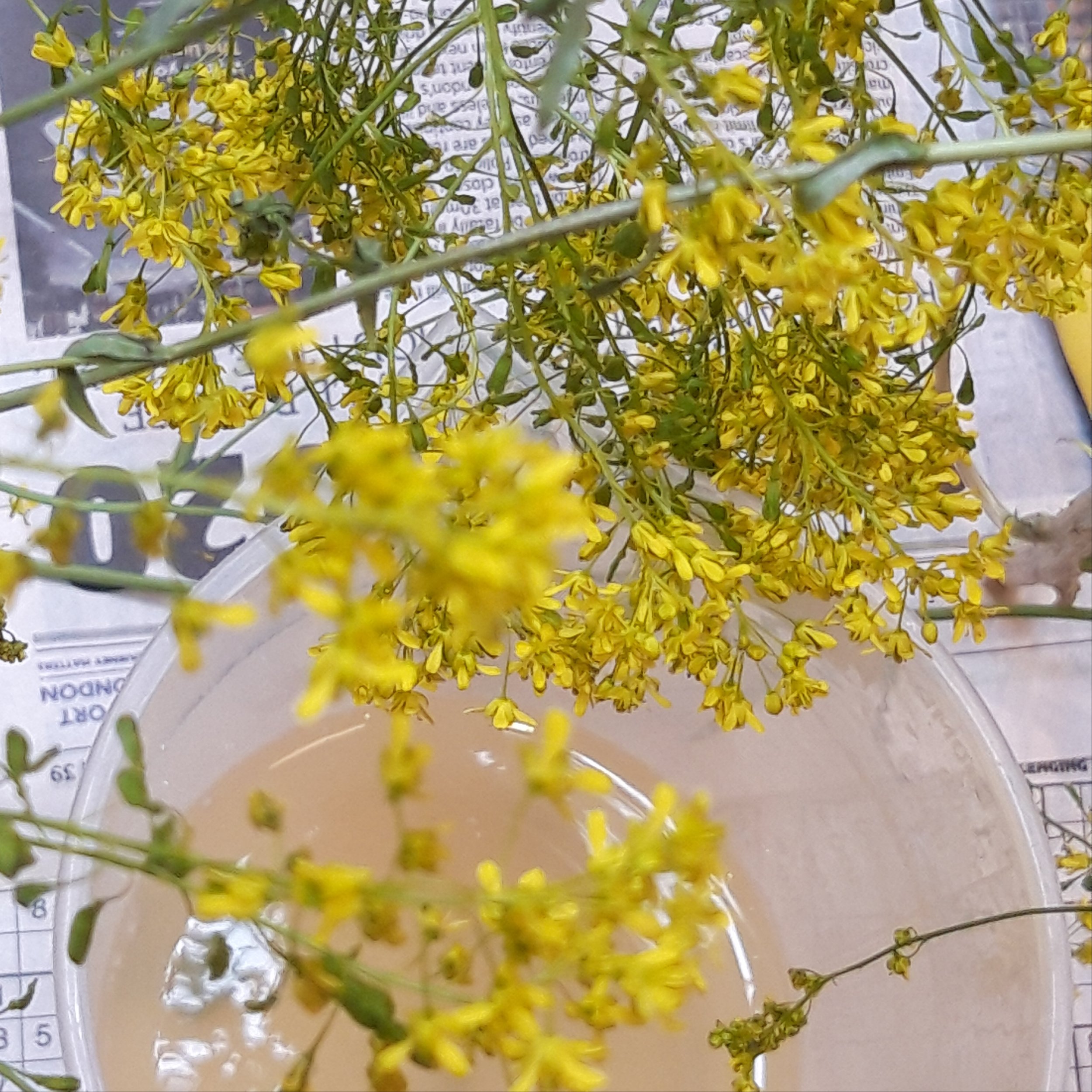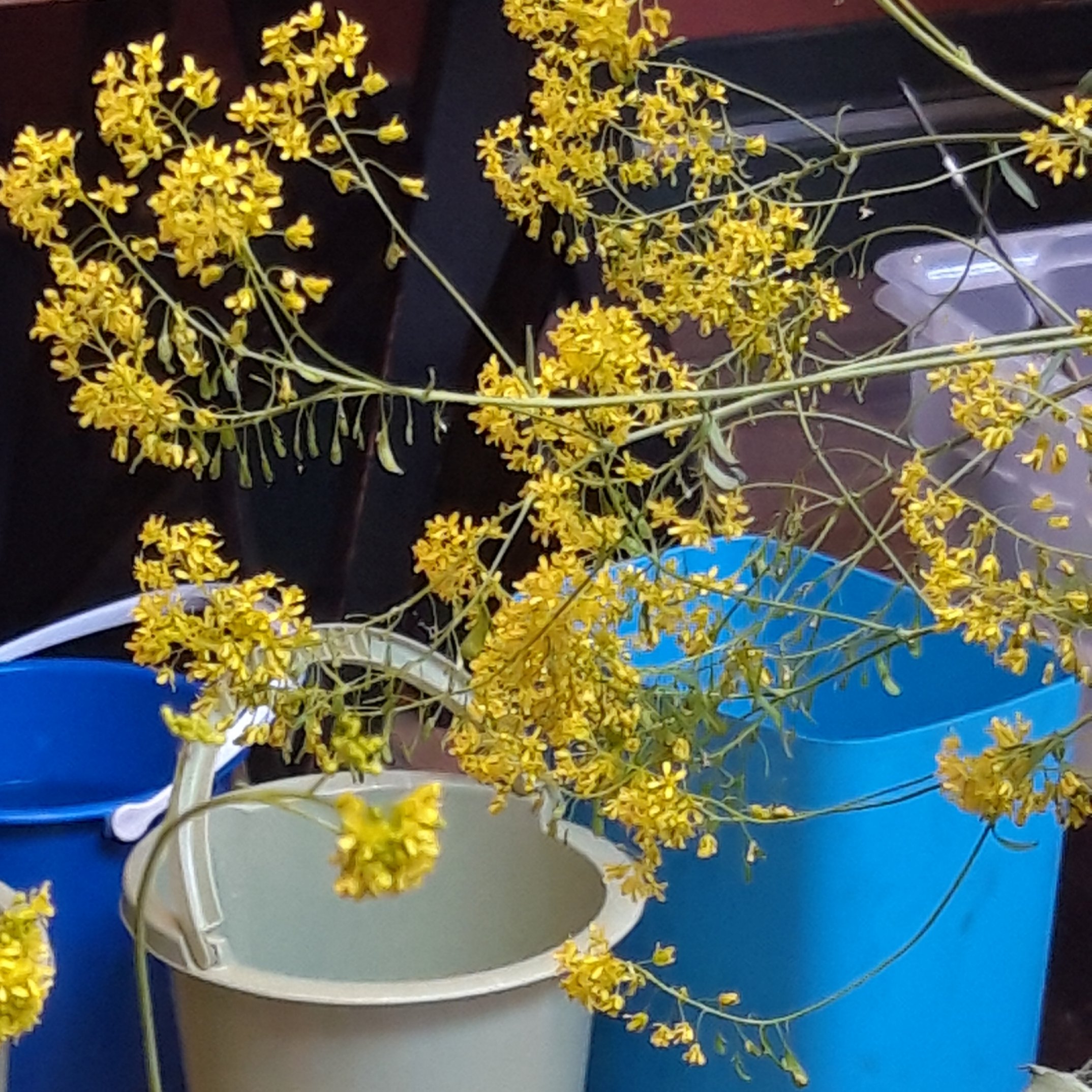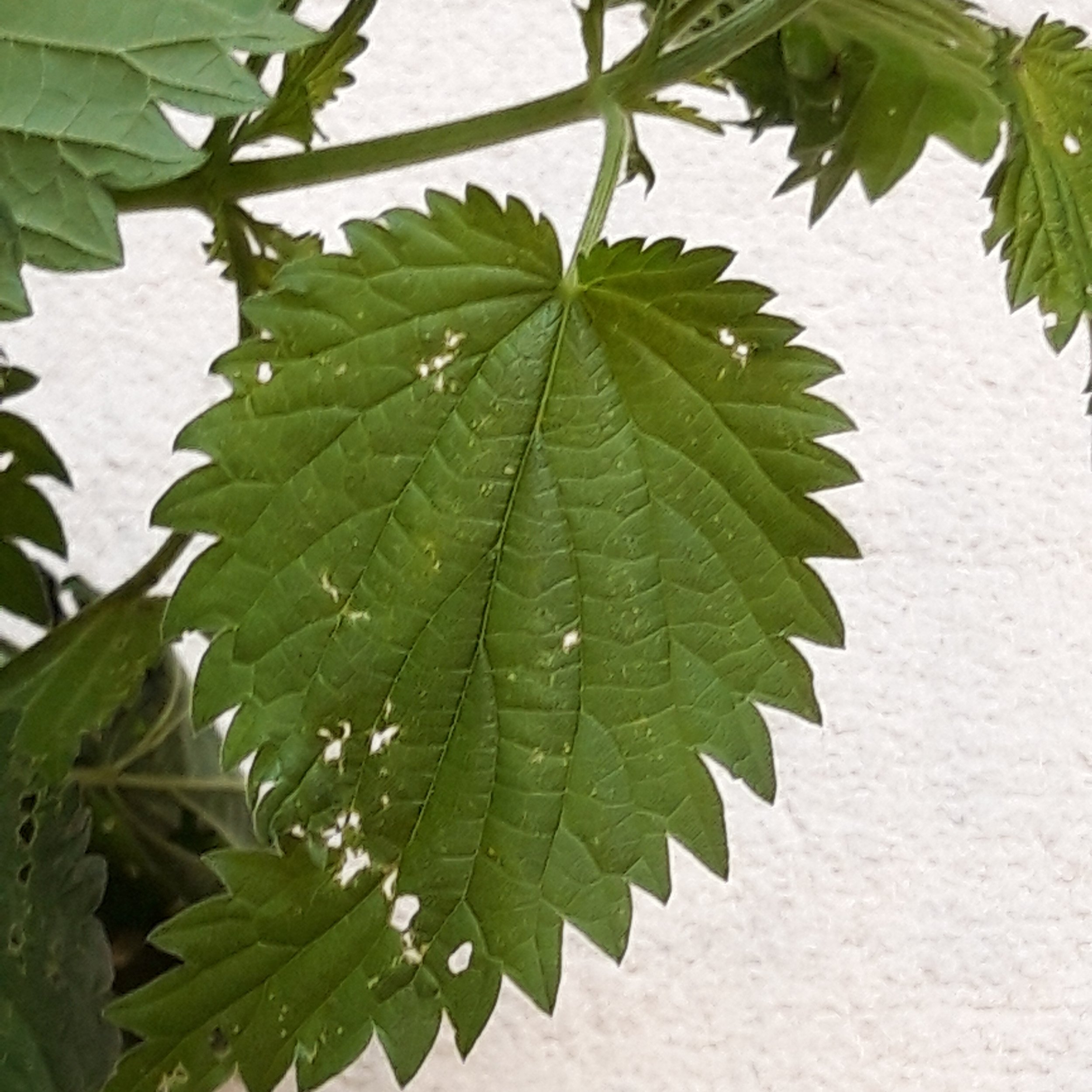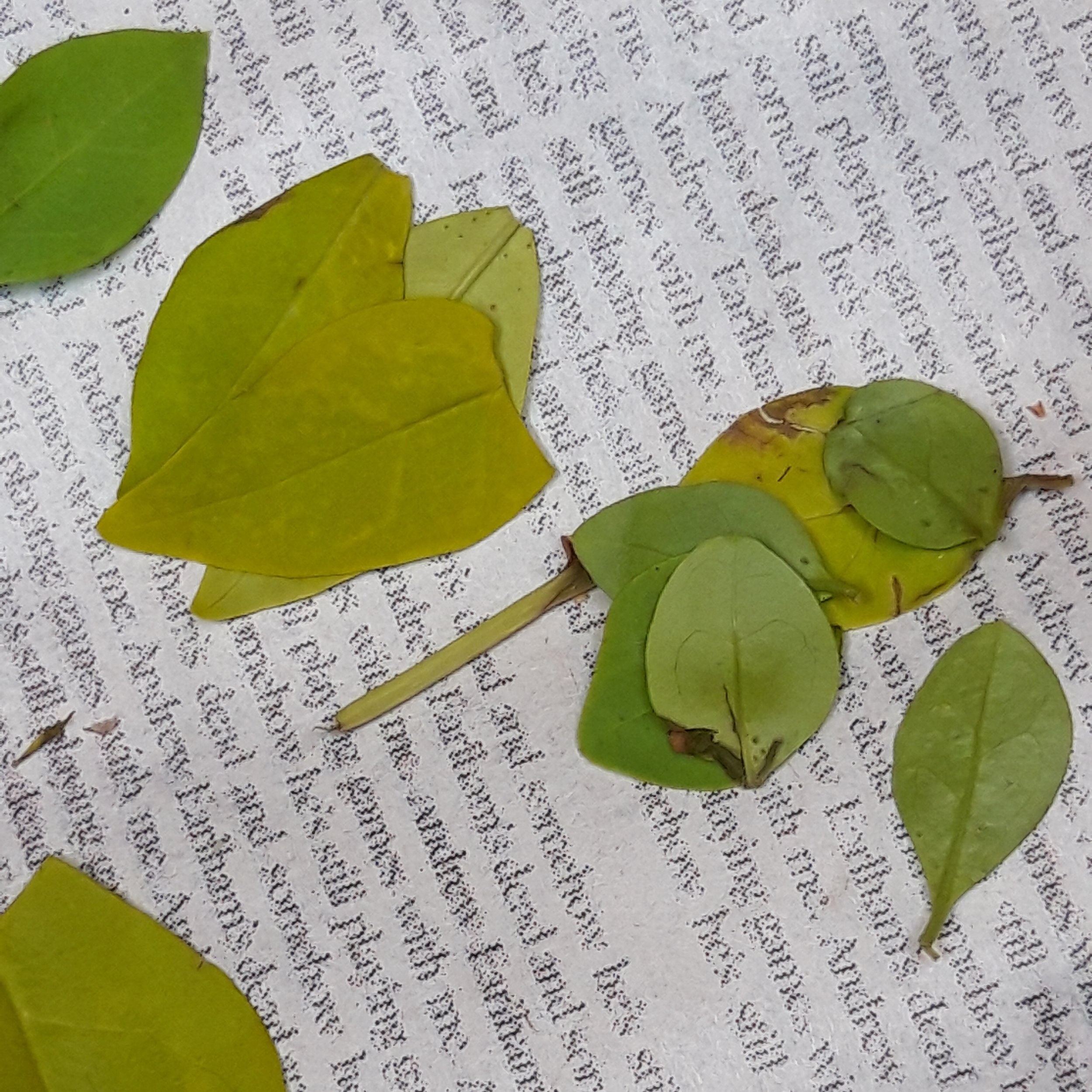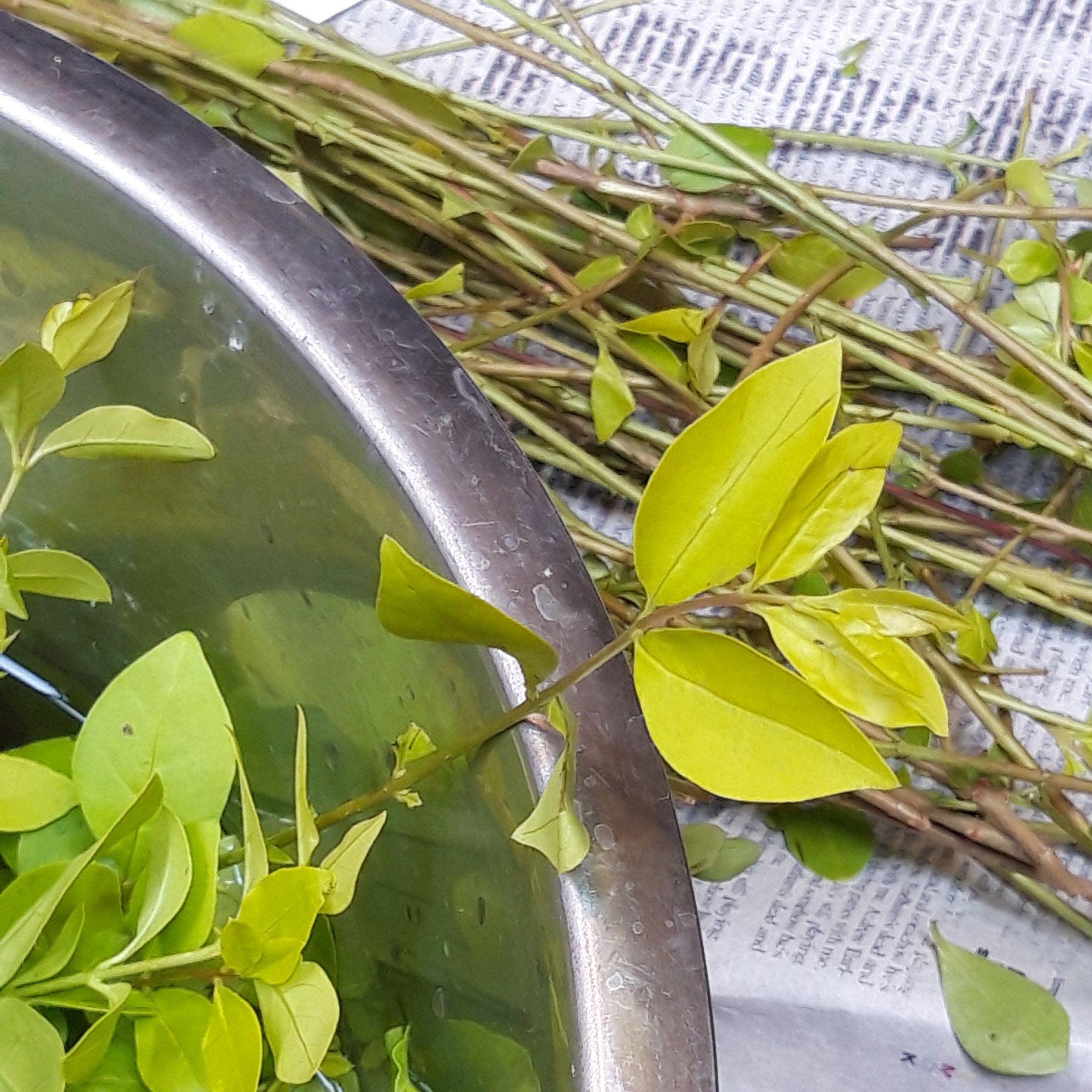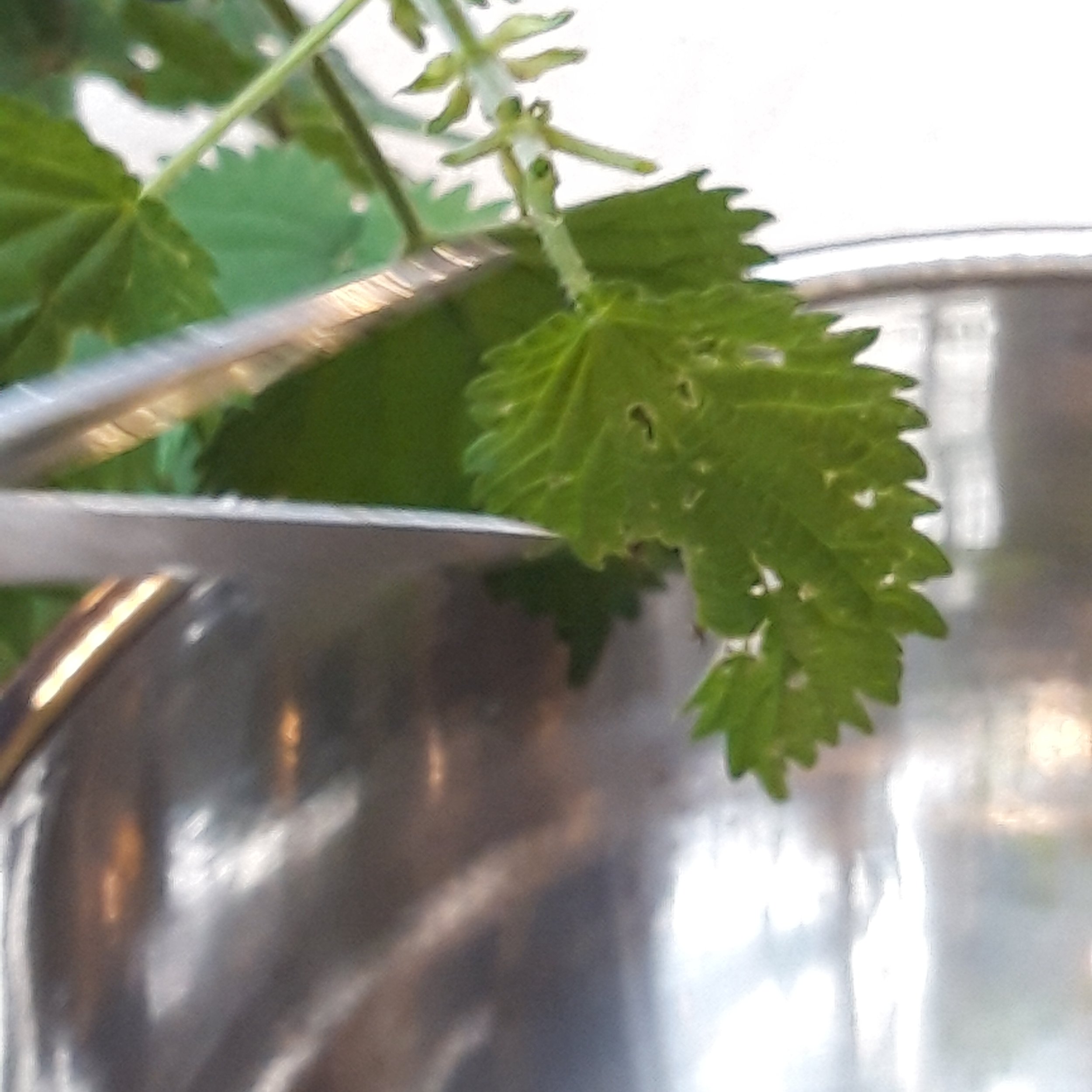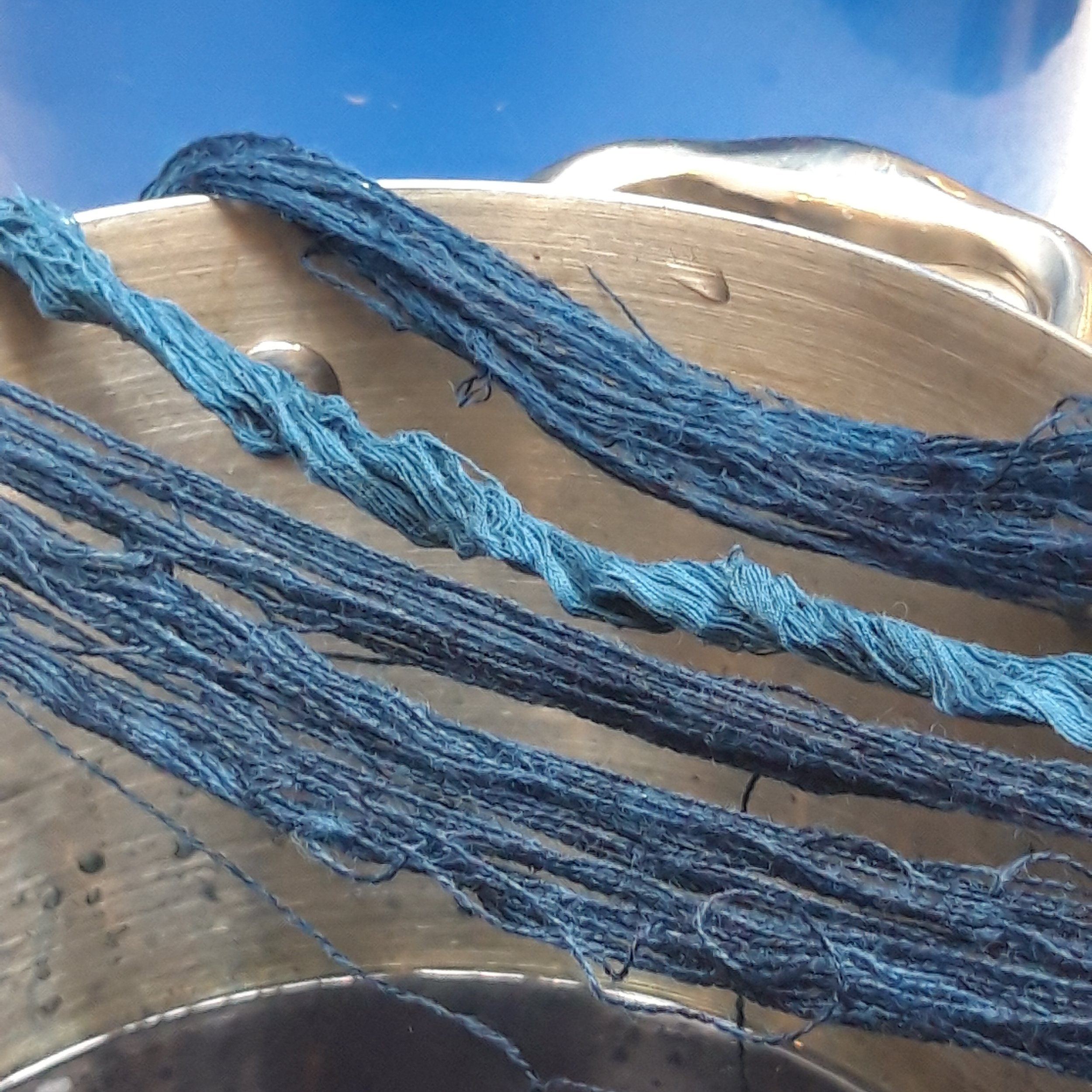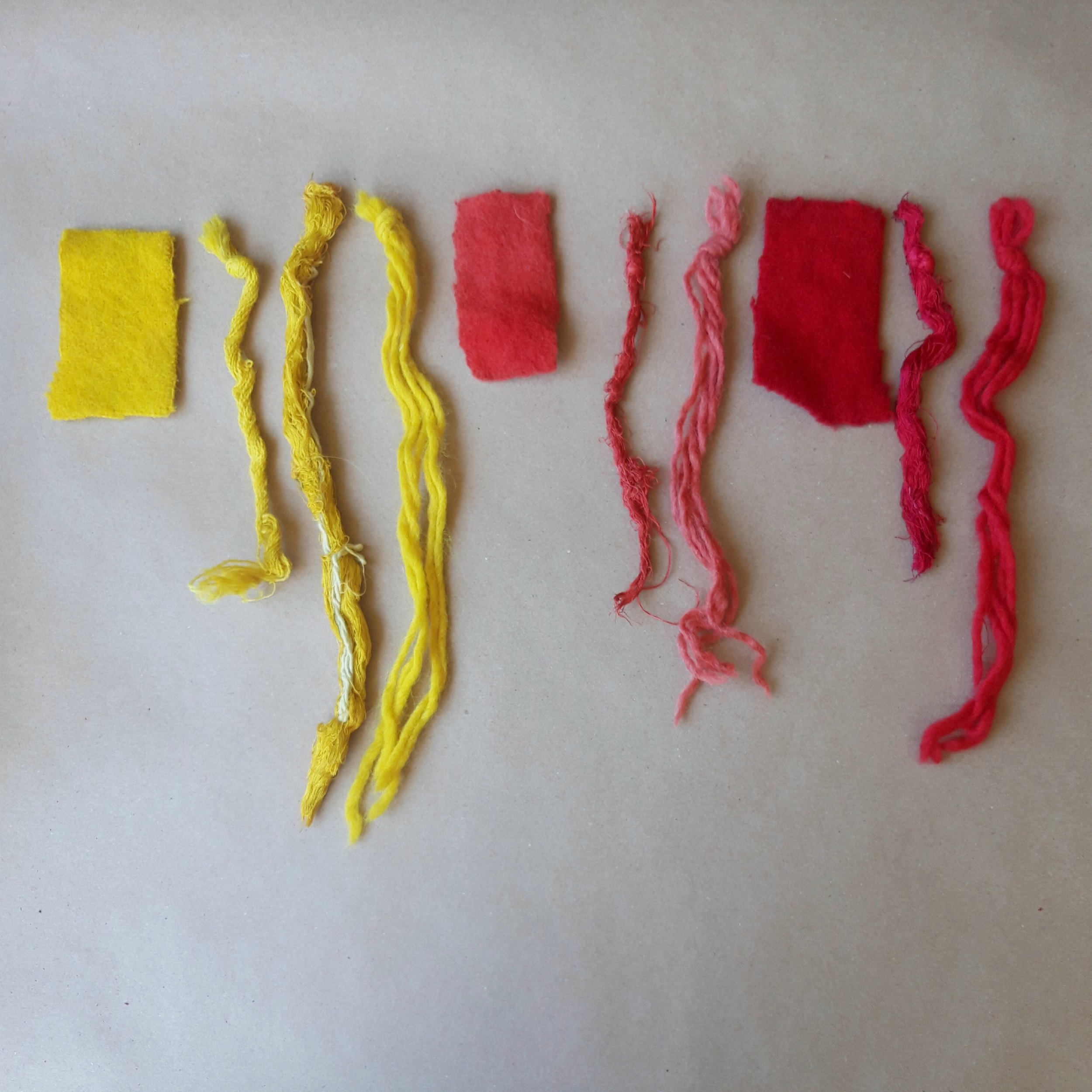Nettle and Buckthorn
The other week I had the great pleasure of taking part in a natural dye workshop led by master-dyer Penny Walsh at the Art Workers’ Guild. I have only ever tried the simplest things in the past - mostly onion skins and tea bags… so this was a chance to learn a little more about plant dyestuffs, mordants and the alchemy of natural dyes.
Many of the dyes Penny uses are from her own garden, or the gardens and allotments of friends. Top left here is woad - the leaves of which yield a heavenly soft blue. On the right are dried weld flowers - they grow as tall straight spears of gold and are also known as ‘dyer’s rocket’.
Above here are woad flowers. The plant is in the brassica/ mustard family, and the flowers are similar to charlock and rapeseed. The colour of the flowers are, of course, no necessary indication of the final dye colour.
Over the course of the day we sampled dyes of weld, madder root, buckthorn berries and logwood.
Above here are nettles and privet leaves - both used as mordants. Cut up, boiled, and steeped for a week before use.
Mordants help to ‘fix’ the dye to the fibres, giving it longevity. The combinations of different mordants, dyestuffs and base fibres, mean that the variations of colour are infinite.
Below are indigo samples, dyed with powdered indigo block derived from the indigo plant. Unlike the other dye-plants, indigo does not need a mordant, but care must be taken to keep the dye vat undisturbed as the addition of oxygen through stirring or agitation spoils the dye. Slow, patient dipping is needed to allow the familiar deep blue hue to build up over time.
And these below are just a small handful of the samples we dyed. The glorious gold to the left are buckthorn berries with a nettle mordant, in the centre is madder with an alum (clay) mordant, and on the right is logwood with a wood-ash mordant.
I was amazed at how vibrant and lively the colours are - a true piece of magic.
With enormous thanks to Penny Walsh, Jane Cox and the Art Workers’ Guild

